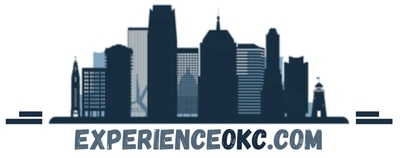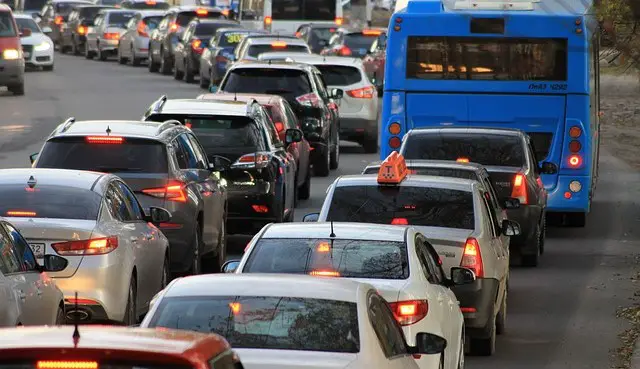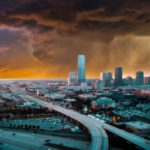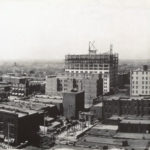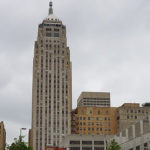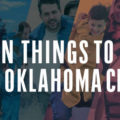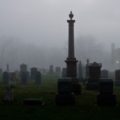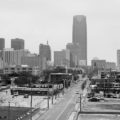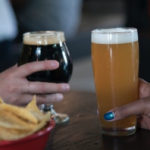What to Know About Oklahoma City Traffic
Oklahoma City traffic really isn’t that bad when you compare it to many other metropolitan areas. However, that doesn’t mean OKC is exempt from its set of traffic problems. With Oklahoma City being the largest city in the state of Oklahoma, as well as being centrally located and a major transportation hub to major highways such as Interstates 35, 40, and 44, it’s no surprise that our city sees so much traffic.
But with careful planning, up-to-date traffic reports, and maybe with a little bit of this knowledge – you’ll find your commute through OKC to be a little safer and less stressful. After learning about Oklahoma City’s Traffic, be sure to check out the free resources at the bottom such as where to find live traffic reports.
Traffic Congestion
Oklahoma City has been ranked as the 110th most congested city in the US by INRIX Global Traffic Scorecard. Drivers in Oklahoma City can expect to spend an estimated 55 hours a year dealing with congestion.
We saw traffic decrease quite a bit when the pandemic hit in 2020; but now we’re seeing traffic levels rise again with an increased average wait time of several minutes since decreased restrictions in 2021.
Areas to Avoid During Rush Hour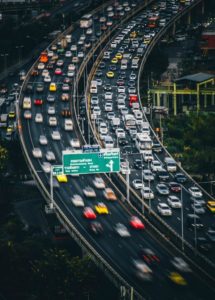
Oklahoma City has decent commuting options when compared to other cities across the country. Unfortunately, just like other cities, some areas in this city also experience high levels of traffic congestion.
For the worst road conditions, one should avoid the I-235 area and HW77 highway, which is also known as the Broadway Extension near the I-44 overpass. This area has improved drastically with the recent reconstruction of the ramps and lanes here; but during peak hours, you may notice a little slow-down in traffic here.
Apart from the usual traffic jams on I-44, traveling south from SH74 (Hefner Parkway) and entering the highway from NW 39th also lead to some delays. During rush hour, traffic on I-44 around the I-40 interchange can become particularly congested with commuters travelling from both the north and south directions.
Rush Hour in Oklahoma City – Best and Worst Times for OKC Traffic
Typically, rush hour traffic lasts a few hours, peaking in the morning from 7:00 AM to 9:00 AM and in the evening from 4:00 PM to 6:00 PM. Commuting in Oklahoma City is busiest between 7:00 AM & 8:00 AM, so it’s best to plan your journey with that time frame in mind.
Traffic congestion can occur in the early evening, usually between 4 PM and 7 PM, on weekdays. To avoid congested roads, it’s best to to drive through the city before 7 am, after 7 pm, or between the hours of 9 am and 3 pm. This should help you get to your destination without too much trouble.
Most Dangerous Roads & Intersections in Oklahoma City
Accidents happen on the roads, but a new study claims that Oklahoma City is more dangerous than many other cities across the country when it comes to car accidents.
According to a recent national safety study by Go Safe Labs, Oklahoma City has been ranked 7th in the nation for traffic accidents in 2019 out of 10 major cities that were reviewed. Based on this study, there were 12,476 crashes last year in Oklahoma City.
In 2019, many car accidents took place on the following roads such as the Turner Turnpike and Lake Hefner Parkway. Additionally, State Highway 9, Interstate 40, and Interstate 240 also have quite a few car accident records
Most Dangerous Times to be on the Roads
Car accidents are almost always unpredictable; however, during some times of the day or year can be more hazardous than others. It is important to be extra vigilant and practice defensive driving when traveling on the roads. According to the Oklahoma Highway Safety Office, Monday had the highest number of traffic deaths in Oklahoma during 2020.
 The study also revealed that different times of the day, as well as certain days of the week, can have their own unique risks associated with them. Additionally, the danger posed by drunk drivers is particularly heightened during weekends. During weekdays, the risk is mostly exacerbated in school zones due to the influx of traffic.
The study also revealed that different times of the day, as well as certain days of the week, can have their own unique risks associated with them. Additionally, the danger posed by drunk drivers is particularly heightened during weekends. During weekdays, the risk is mostly exacerbated in school zones due to the influx of traffic.
Oklahoma recently experienced a notable surge in road fatalities during October, which was consistent with the national trend of the highest mortality rates in September. Traffic accidents usually peak during the hours of 3 to 4 PM and 5 to 6 PM, with most traffic fatalities occurring during these times.
During the fall season, when daylight hours tend to lessen and visibility is lower, drivers are advised to pay extra attention and be more alert. This is especially important during twilight hours. Additionally, during harvest season, rural roads usually witness a lot of traffic from farm vehicles, making them riskier for other motorists. Extra caution must be exercised when traveling through these areas.
Ultimately, maneuvering through Oklahoma City is similar to driving in any other average-sized city. To make your journey smooth, plan your travels ahead of time. Try avoiding travel during peak hours, and use alternative routes when possible. Also, download a reliable traffic monitoring app and stay alert while driving. With these precautions, you can avoid potential congestion & delays!
Free Live Traffic Resources for Oklahoma City
Click Here for Live Traffic Reports from Oklahoma Transportation
Our Top 3 Recommended Traffic Apps for Your Phone (Apple & Android):
1. Google Maps
2. MapQuest
3. Waze
This interactive Waze Map below can show you traffic hazards and congestion in real time.
You can zoom in or enter the address of the area you would like to show.
Frequently Asked Questions About OKC Traffic:
What is the traffic like during rush hour in Oklahoma City?
Rush hour can definitely slow down certain areas of the city. Some of the areas in Oklahoma City that are prone to traffic congestion during rush hour include major highways such as I-35 and I-40, as well as high-traffic areas such as downtown, the Bricktown entertainment district, and the Northwest Expressway corridor.
Other busy areas during rush hour include the Memorial Road and Broadway Extension intersection, the Hefner Parkway and Lake Hefner Parkway intersection, and the I-35 and I-240 interchange.
Are there toll roads in Oklahoma City?
Yes, most notably you will have to pay tolls on the John Kilpatrick Turnpike (from SH-152 and leads to I-35 and I-44) and Turner Turnpike on I-44 which leads to Tulsa. Other turnpikes in the surrounding area include:
- H.E. Bailey Turnpike (I-44)
- Chickasaw Turnpike (SH-7)
- Indian Nation Turnpike (SH-69)
- Cimarron Turnpike (US-412)
- Creek Turnpike (SH-364)
What is the speed limit on the highways in Oklahoma City?
The speed limit for most highways inside Oklahoma City limits are set at 60 MPH. However, it varies depending on the highway and where it’s located within the city.
How long does it take to drive across the city during non-peak hours?
The time it takes to drive across Oklahoma City during non-peak hours can vary depending on the distance and specific route. As a general estimation, it can take anywhere from 20 to 45 minutes to drive from one side of the city to the other without traffic congestion.
What are the most congested areas of the city for traffic?
Some of the most congested areas in Oklahoma City include the downtown area, particularly around the junctions of Interstates 35, 40, and 235, as well as some of the major arteries leading in and out of the city during peak traffic hours. Other congested areas may include major commercial corridors, such as the Northwest Expressway and Memorial Road.
Are there public transportation options available in Oklahoma City?
Yes, Oklahoma City has a public transportation system called Embark, which includes bus services and a streetcar line in the downtown area. In addition, there are also taxi and ride-sharing services available for residents and visitors. Read more about public transportation and getting around OKC without a car here.
What is the parking situation like in downtown Oklahoma City?
Downtown Oklahoma City has a variety of parking options, including metered street parking, surface lots, and parking garages. Metered parking is enforced Monday through Saturday from 8:00 a.m. to 6:00 p.m. and is free on Sundays and holidays. Rates for parking garages and surface lots can vary depending on location and time of day, with some offering hourly rates and others offering daily or monthly rates for regular users.
Are there any particular driving laws or regulations unique to Oklahoma City?
One unique driving regulation in Oklahoma City is that motorists are required to use headlights whenever windshield wipers are in use due to weather conditions. Another regulation is that it is illegal to park within 20 feet of a crosswalk at an intersection. Additionally, Oklahoma City has a ban on texting while driving, and teen drivers are not allowed to use their cell phones at all, including making phone calls (does not apply during an emergency.)
How do weather events, such as snow or ice, affect traffic in Oklahoma City?
Weather events such as snow or ice can significantly impact traffic in Oklahoma City as the area is not accustomed to frequent winter weather. Snow or ice accumulation can cause road closures, accidents, and slower driving conditions, resulting in longer commute times and potentially hazardous driving conditions.
Concluding Thoughts:
Navigating through Oklahoma City traffic requires patience, caution, and a bit of strategy. Drivers should expect delays during peak hours and plan accordingly. It’s important to be aware of the city’s high-traffic areas and alternate routes to avoid congestion.
Additionally, taking advantage of the city’s growing public transportation options or carpooling can help reduce the number of vehicles on the road. While Oklahoma City’s traffic can be frustrating at times, with careful planning and a bit of flexibility, it is possible to safely and efficiently navigate the city’s roads.
